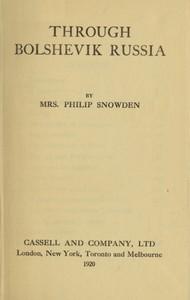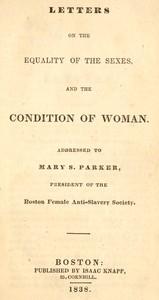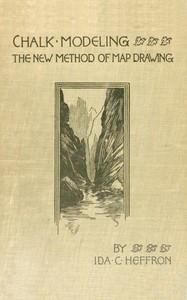|
|
Read this ebook for free! No credit card needed, absolutely nothing to pay.Words: 13720 in 8 pages
This is an ebook sharing website. You can read the uploaded ebooks for free here. No credit cards needed, nothing to pay. If you want to own a digital copy of the ebook, or want to read offline with your favorite ebook-reader, then you can choose to buy and download the ebook.

: Practical forging and art smithing by Googerty Thomas F Thomas Francis Lake Edward J Author Of Introduction Etc - Forging; Ironwork@FreeBooksThu 08 Jun, 2023 In hardening thin pieces of steel such as knives, very thin milling cutters, etc., there is always difficulty in preventing warping after hardening. Two heavy surface plates, planed on one side, are used. On one of these plates equal parts of tallow and lard are spread 1/4 inch thick. The knife is heated in a steam pipe with one end plugged and having fire under and over it. When an even red heat is reached, the knife is brought out and set on the oil and at the same time the top plate is set onto the knife until cool. This hardens the blade and keeps it from springing. The knife is brightened and the temper is drawn to a dark straw color by holding it on a hot iron. Very small pieces of steel are packed into an iron pipe or box surrounded with charcoal. The whole is then heated red and the pieces are dumped out and cooled in water. To draw temper, they are put in an iron ladle filled with lard oil that is heated on the fire. All small pieces of tool and spring steel should be welded with separate heats. A little practice and a clean fire, with some good welding compound, are necessary. In separate heat welding of flat steel, the flat sides of the scarfs are put together instead of the beveled ones. The scarfs are shown in Figure No. 115. The method of riveting and splitting small pieces of flat steel to hold them together while taking the heat is not to be recommended because after they are put together in this manner the lap is double thick, and in raising the heat there is always danger of over-heating each side of the lap. Separate heats and a clean fire is the best method to use to make a good weld, unless the steel is heavy. In this case, it is split and forked as previously explained. A piece of metal of any kind is said to be "annealed" when made very soft. Steel should be annealed before it is filed, drilled, or machined, as it is a very hard metal to work when cold. The method of annealing is first to heat the piece to a red heat. It is then covered with warm, slacked lime so that the air will not come in contact with it until cool. A simple way to anneal, when in a hurry, is to heat the steel red, setting it in a dry place on the forge until black. It is then plunged into water quickly and brought out. This operation is repeated until the piece is cool. Steel is also annealed by heating the piece red and setting it on the forge until cool. The slower steel is cooled, the softer it becomes. Wrought iron and mild steel forgings should always be annealed when used in work where there is danger of breaking them. This tool is used to scratch holes on the surface of metal, and also to lay out shapes on metal. Figure 116 shows the dimensions of stock. The piece should be carbon steel. One and one-half inches from one end, the bar is drawn out until it measures 2 1/4 inches in length, as shown in Figure 117. It is then bent on an angle as shown in Figure 118. This part is now heated and hammered over the horn of the anvil to form the eye or ring. It is then twisted by catching one end in the vise and twisting to the right. The point is next drawn out as shown in Figure 119. The point is then ground or filed and the awl tempered hard. Figure 120 shows the size of stock and Figure 121 shows the center-punch completed. The top part is first made, then the bottom is drawn out to a taper. In doing this, it is first drawn square, then eight sided and finally rounded. The point is ground and the punch is tempered to a purple color. For heavy centering a larger size steel should be used. Hand-punches are made of various sizes of stock, 5/8 in., 3/4 in. and 7/8 in., and are used for hot punching. Figure 122 shows the size of stock for a punch that will be useful in the school shop, and Figure 123 shows the completed punch. It is made in the same manner as described for the center-punch. This punch must not be tempered. For punching square holes the punch is drawn square, and the ends of all hand-punches are made smaller than the hole to be punched. High speed steels, due to their hardness and durability, retain their edge when cutting at extremely high speeds. It has only been of recent years that high speed steels came into use. Before this time self-hardening steels were made by Jessop and Mushet which were in general use. They were tempered by heating to a dark red and left to cool in the air. The high speed steels of today are heated to 2,000? or 2,200? Fahr., or a white heat bordering on a welding heat. The chemical composition of these new steels are only known by their makers. However, it is said that they contain carbon, tungsten, chromium, manganese and other elements. The great advantage in using high speed steel, is that a machine can be run three times as fast as one using carbon steel, without destroying the edge of the tool. The output is therefore greater. Of course, in order to force this steel to do a great amount of work the machine tools should be constructed to stand heavy strains. All kinds of tools are now being made from high speed steel. For light lathe work, high speed steel is used in the adjustable tool holder. The most common tool for doing heavy work is the round nose which is made from various size steel. Free books android app tbrJar TBR JAR Read Free books online gutenberg More posts by @FreeBooks

: Letters on the equality of the sexes and the condition of woman by Grimk Sarah - Women's rights United States; Women History; Women United States@FreeBooksThu 08 Jun, 2023
|
Terms of Use Stock Market News! © gutenberg.org.in2025 All Rights reserved.






